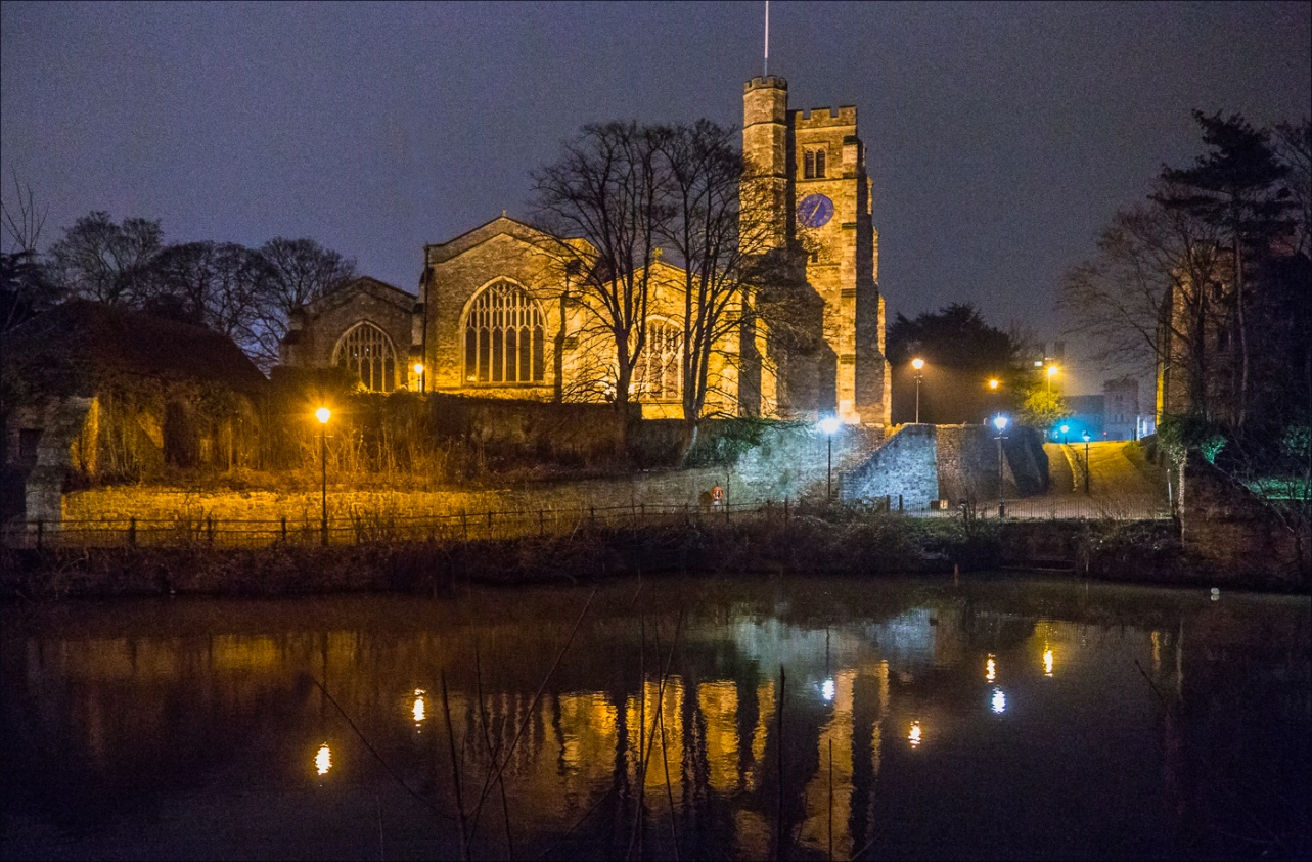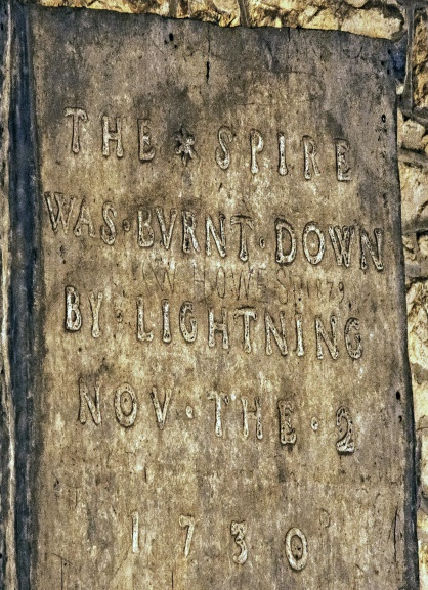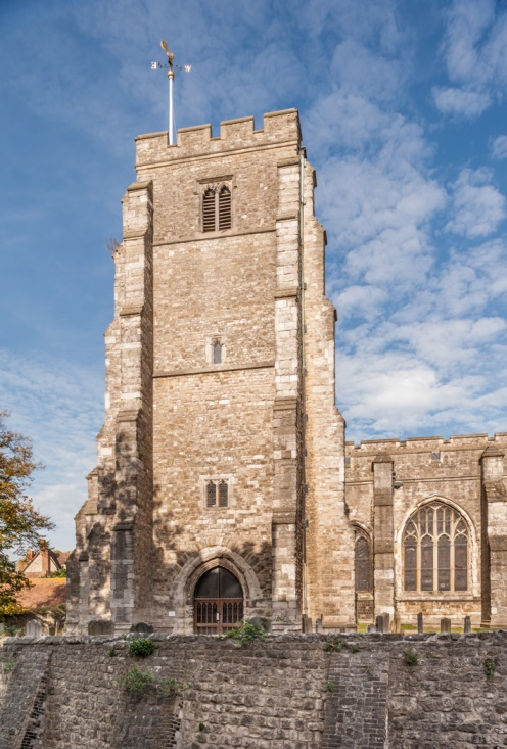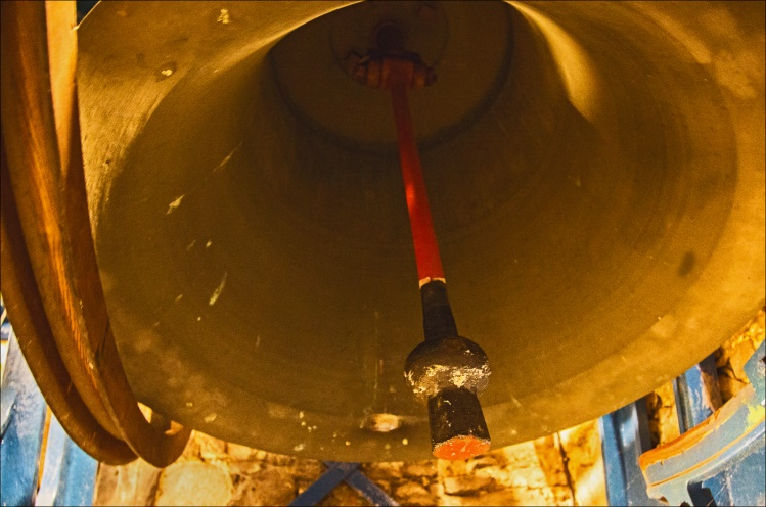WELCOME !
Welcome to the Parish Church of All Saints Maidstone. We hope this web-based tour around our wonderful church will provide for you some of the history of this magnificent building and its contents. We also hope it will inspire you to come and visit the church where you will experience much more than this electronic tour can provide.
The photographs shown were taken by Clive Tanner FRPS, MPAGB, Chris Rigby and John Butler of Maidstone Camera Club to whom we are most grateful.
THE HISTORY OF ALL SAINTS CHURCH
A Saxon church existed on or near this site as early as the 7th Century and was dedicated to St Mary. The first know Rector in 1205 was William de Cornhill and in 1207 he gave his Manor House in Maidstone as a residence for the Archbishop. On 25th June 1395 Pope Boniface IX gave authorisation for a Collegiate Church to be established in Maidstone. A few weeks later on 2 August, King Richard 2nd (who was staying at Leeds Castle) signed a licence to Archbishop William Courtenay to establish a College of 24 Secular Canons in Maidstone and gave him permission to convert St Mary’s into a Collegiate Church. St Mary’s was demolished and the erection of the present Church dedicated to All Saints was begun on or near the site of St Mary’s. It is believed that the Master Mason was Henry Yvele, who also designed the Nave of Canterbury Cathedral and was considered to be the finest Mason in the Country.
Courtenay, who was a grandson of Edward 1st, died only a year later in 1396 before the building was completed. His successor was Archbishop Arundel who oversaw the completion of the Church in about 1405, though the exact date is not known.
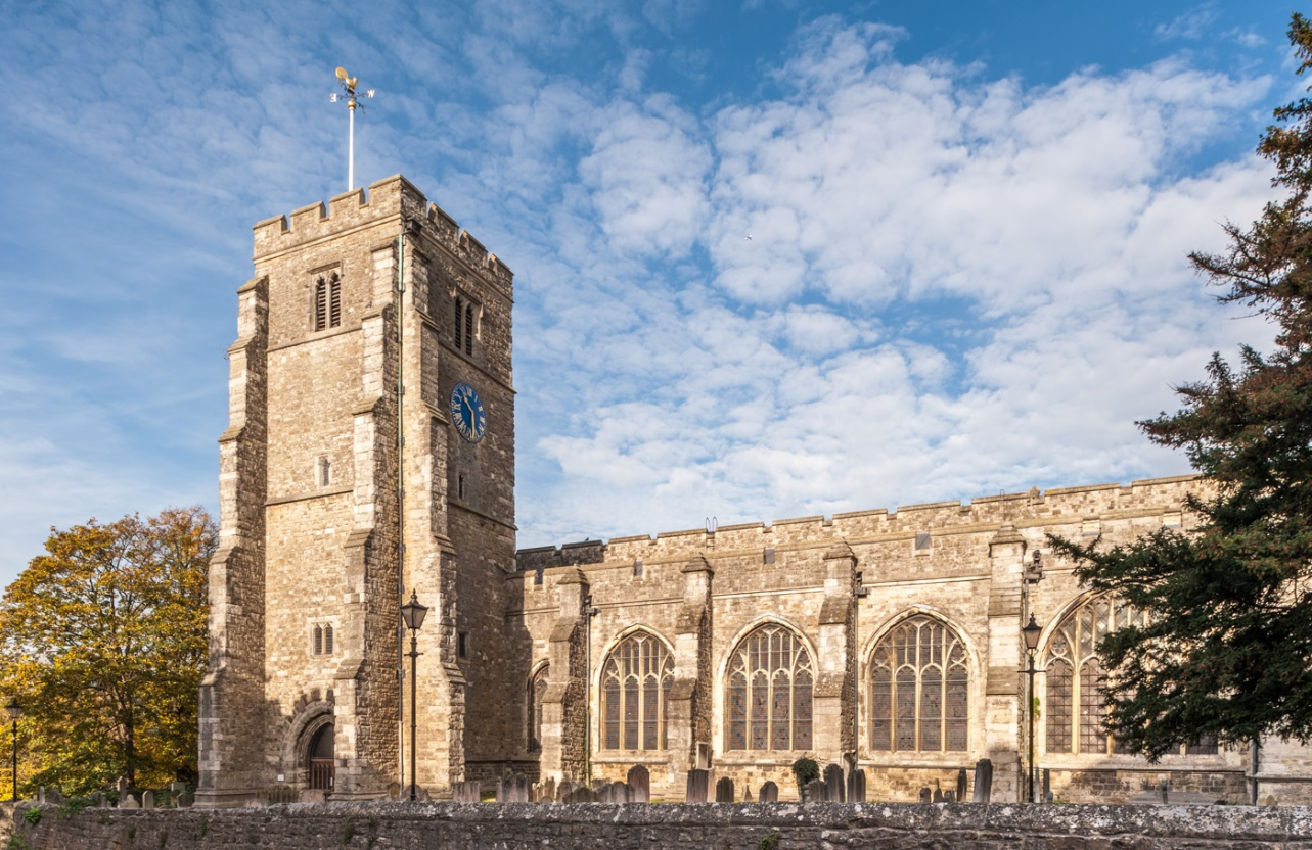
The building is situated on the bank of the River Medway. It is uniformly built in the early “perpendicular” style of architecture and is virtually unchanged. The Church is largely built from Kentish ragstone with the doorways and window casing in Caen stone. The Vestry was added in the mid 1800s, the North porch added in 1927 and the wooden spire no longer exists. In 1885-86 the architect J. L. Pearson re-roofed the church, built a new organ chamber and did much refurbishment work.
All Saints Church is one of the widest parish churches in the country and its remarkable size is largely due to its function as a collegiate church.
|
All Saints Church from the Medway |
All Saints Church at night from the Medway |
The Tower
The Tower is on the south-west corner of the church and is 78 feet (24 m) tall. It can be accessed by a small door within the porch which leads to a spiral staircase. The Tower was formerly topped by a 80 feet (25m) timber and lead spire, which was destroyed by a lightning strike on 2nd November 1730. The timber roof over the bell-chamber (which has a modern iron bell-frame), is still the timber base for the original spire, with various re-used (and burnt) spire timbers for rafters.
|
Plaque in the porch commemorating the fire |
|
In 1669 Samuel Pepys visited Maidstone and climbed to the top of the Tower. His view may not have been quite the same as it is today!
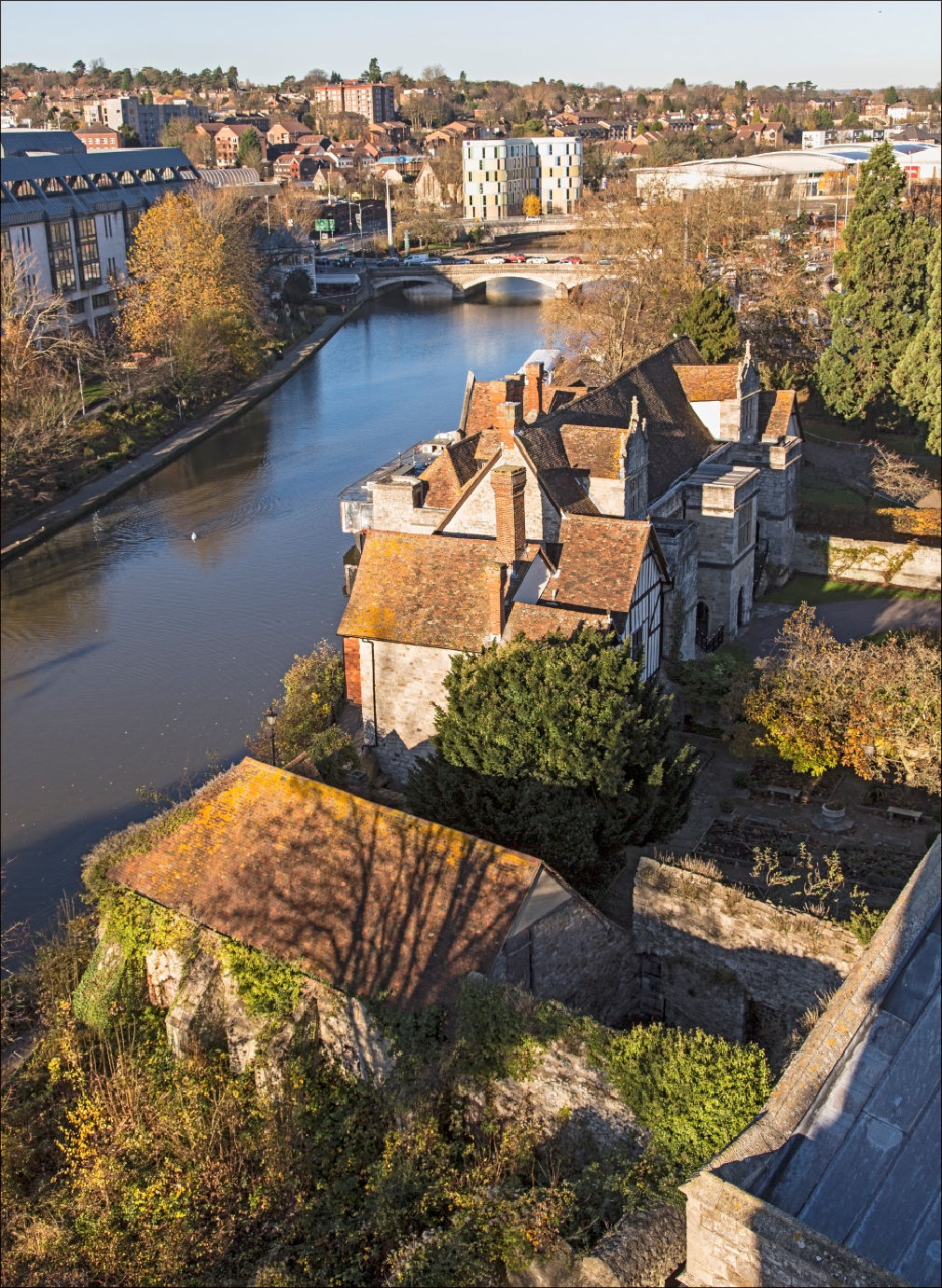
View from the top of the Tower
The Bells
There are ten bells in the Tower at All Saints ranging from the lightest - the Treble – weighing five cwt/diameter twenty-nine inches, to the heaviest – the Tenor – weighing thirty-two cwt./diameter fifty-six inches. The oldest original bell was cast in 1783 but all the bells were re-cast in 1957 by John Taylor & Co. of Loughborough.
|
|
|
In the ringing chamber there are many interesting boards recording some of the major peals that have been undertaken. Here is an example:
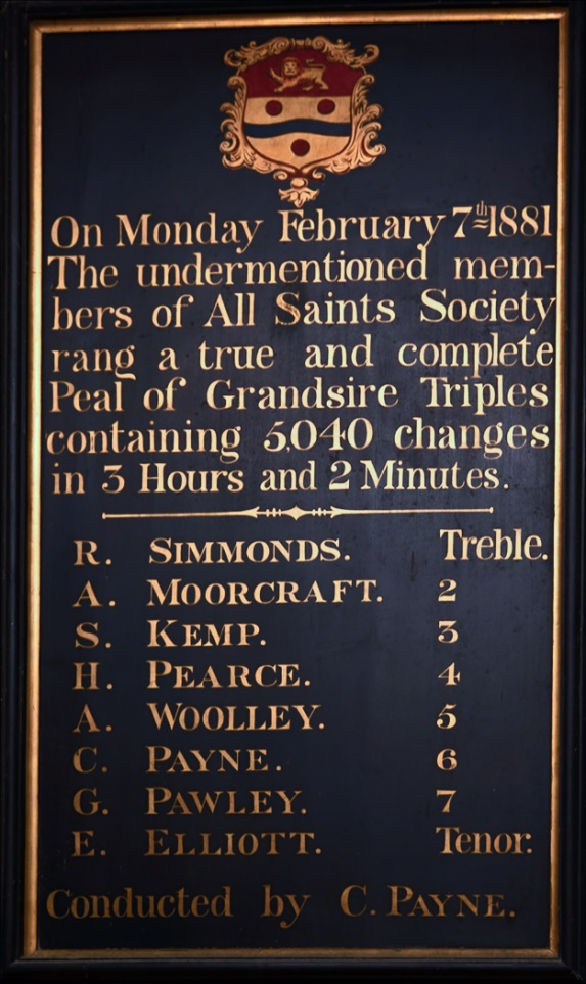
The South West Porch
It is believed that originally the porch had a vaulted roof but was taken out in about 1558 and replaced with the current wooden roof. On the wall of the porch is piece of lead salvaged from the spire.
We will now enter the church through the South West Door
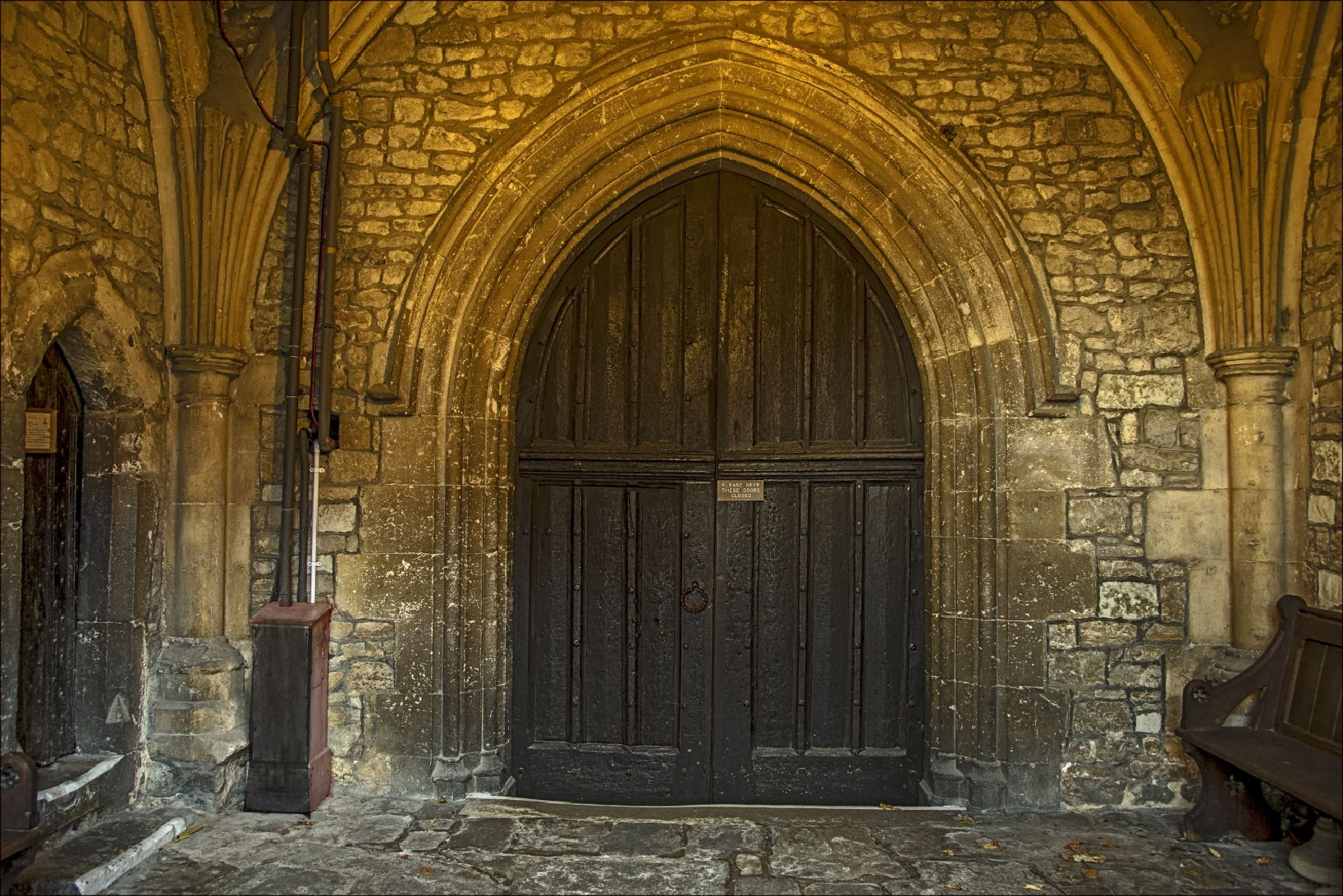
When you look closely, you can see small round indents on the outside surface of this door. These were made by musket shot (round metal balls) fired at it during the Civil War of 1648 while the townsfolk sought safety in the church. General Fairfax was sent to take the town because it supported Charles 1st. 1400 prisoners were kept in the church, along with the soldiers and their horses!

!
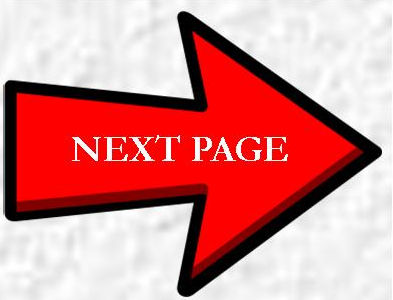 |

